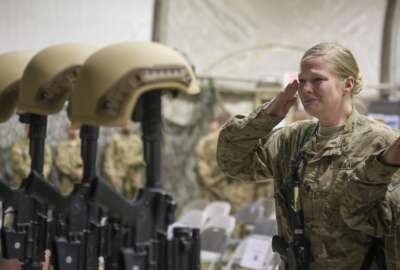
Preliminary findings show service members in remote bases more likely to attempt suicide
DoD is coming off a record high year of military suicides.
Last year, three military bases in Alaska accounted for 11 service member suicides, and six more deaths are currently being investigated as possible suicides.
The three bases outside the contiguous United States (OCONUS) have been flagged by the Defense Department as areas of concern because of the number of people taking their own lives.
The Pentagon is focusing more attention on remote bases and the effects they have on service members since suicide numbers began to rise in those areas a few years ago.
The Government Accountability Office presented preliminary findings to the Senate Armed Services Personnel Subcommittee Wednesday as to what is going on in those bases and what DoD can do to help.
“Our preliminary analysis suggested that remote OCONUS installations accounted for a slightly higher proportion for suicide attempts, but a lower proportion of suicide deaths from 2016 to 2020,” Brenda Farrell, GAO director of defense capabilities and management, told the committee. “DoD officials told us that the extent of suicide deaths at OCONUS installations may be lower because service members assigned to installations outside the U.S. have limited access to nonmilitary issued firearms. We found that nonmilitary issued firearms were involved in over half of reported suicide deaths among members assigned to CONUS installations, and were involved in slightly over a quarter or fewer among members assigned to OCONUS installations.”
Farrell went on to tell the committee that gaps exist in OCONUS base policies, programs and activities aimed at suicide prevention. For example, the military services have not established required prevention teams on bases.
Suicides in the military writ large have been on the rise in recent years. Suicides hit an all-time high in 2020, with 580 service members taking their lives.
Part of the issue is a nation-wide shortage in behavioral health professionals. The United States is short about 250,000 people in that field.
DoD has tried to deal with that shortage by appointing squad leaders as mental health specialists in every unit.
That has come under scrutiny by some in the military. After Gen. Mark Milley, chairman of the Joint Chiefs of Staff, told Congress Tuesday that squad leaders or their equivalents were acting as behavioral specialists, some service members took to Twitter to express concern.
“NOPE NOPE NOPE NOPE NOPE squad leaders are incredible, but young adults are not equipped to be a doctor to their peers’ very real mental health struggles,” one wrote.
Some critics say that low-level leaders can help spot issues, but do not have the training to actually help someone in need.
The Pentagon is taking on suicide issues on a larger scale, much like it did with sexual assault and harassment last year.
In March, DoD announced the establishment of the Suicide Prevention and Response Independent Review Committee (SPRIRC), a commission that will use third-party experts to critique the military’s response to mental health.
DoD says SPRIRC will review the military’s activities and actions to address suicide prevention and response. It will also look further into the actions underway regarding the sexual assault commission’s recommendations.
“It is imperative that we take care of all our teammates and continue to reinforce that mental health and suicide prevention remain a key priority,” Defense Secretary Lloyd Austin wrote in the memo establishing the committee. “One death by suicide is one too many. And suicide rates among our service members are still too high. So clearly we have more work to do.”
Nine installations will act as the first bases for review including Ft. Campbell in Kentucky, Camp Humphreys in South Korea and Joint Base Elmendorf-Richardson in Alaska. Alaska has had some of the highest military suicide rates.
Copyright © 2025 Federal News Network. All rights reserved. This website is not intended for users located within the European Economic Area.
Scott Maucione is a defense reporter for Federal News Network and reports on human capital, workforce and the Defense Department at-large.
Follow @smaucioneWFED






